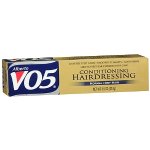I'm getting started in reloading for the first time. I ordered a Lee Challenger kit and bullet puller and I think the only other thing I need besides components are dies. I'm a little confused about dies so I'd appreciate it if someone could answer a few questions.
1. What's the best value in dies? There are lots of brands out there.
2. Which dies do I need? I know I need a sizing die and a seating die. I see full length seating dies and from what I understand these can also be used to "bump size" brass. But, I also see dies specifically for bump sizing or neck sizing.
I see seating dies with and without micrometers. Are these necessary?
Are less expensive non-match dies going to yield less accurate ammunition?
I'm sure most of you have gone through lots of different dies, but if you could start over again at the beginning what would you buy?
1. What's the best value in dies? There are lots of brands out there.
2. Which dies do I need? I know I need a sizing die and a seating die. I see full length seating dies and from what I understand these can also be used to "bump size" brass. But, I also see dies specifically for bump sizing or neck sizing.
I see seating dies with and without micrometers. Are these necessary?
Are less expensive non-match dies going to yield less accurate ammunition?
I'm sure most of you have gone through lots of different dies, but if you could start over again at the beginning what would you buy?


